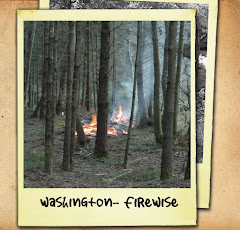OUTLOOK: Winter storm conditions are possible in the next 2-5 days.
Stay tuned to local media for updates.
WATCH: Winter storm conditions are possible within the next 36-48 hours.
Prepare now!
WARNING: Life-threatening severe winter conditions have begun or will
begin within 24 hours. Act now!
ADVISORY:: Winter weather conditions are expected to cause significant
inconveniences and may be hazardous. If you are cautious,
these situations should not be life threatening.
Stay Informed!
Electronic equipment available to receive weather information/NOAA
(Weather Radio, Radio, TV, Pager, Cell Phone, Two-Way Radio)
OUTSIDE:
Find Shelter
- Try to stay dry.
- Cover all exposed body parts.
No Shelter
- Build a lean-to, wind break or snow cave for protection from the wind.
- Build a fire for heat and to attract attention.
- Place rocks around the fire to absorb and reflect heat.
Melt Snow for Drinking Water
- Eating snow without melting it will lower your body temperature.
IN A VEHICLE
Stay in vehicle
- You will become quickly disoriented in wind driven snow and cold.
- Run the motor about 10 minutes each hour for heat.
- Open the window a little for fresh air to avoid carbon monoxide poisoning.
- Make sure the exhaust pipe is not blocked
Be visible to rescuers
- Turn on the dome light at night when running the motor.
- Tie a colored cloth, preferably red, to the antenna or door.
- After snow stops falling raise the hood of your car to indicate you need help.
Exercise
- From time to time, move arms, legs fingers and toes vigorously to keep blood circulating and to keep warm
INSIDE
Stay inside
- When using alternate heat from a fireplace, wood stove, space heater, etc..use fire safeguards and properly ventilate.
No heat
- Close off unneeded rooms.
- Stuff towels or rags in cracks and under doors.
- Cover windows at night.
- Eat and drink. Food provides the body with energy for producing its own heat. Keep the body replenished with fluids to prevent dehydration.
- Wear layers of loose-fitting, lightweight, warm clothing. Removelayers to avoid overheating, perspiration and subsequent chill.
AVOID OVEREXERTION, such as snow shoveling , pushing a car or walking in deep snow. The strain from the cold and the hard labor can cause a heart attack. Sweating could lead to a chill or hypothermia.
Exposure to cold can cause frostbite or hypothermia and become life-threatening. Infants and elderly people are most susceptible. Freezing temperatures can cause severe damage to citrus fruit crops and other vegetation. Pipes may freeze and burst in homes that are poorly insulated or without heat.
Wind Chill is not the actual temperature but rather how wind and cold feel on exposed skin. As the wind increases, heat is carried away from the body at an accelerated rate, driving down the body temperature.
Animals are also affected by wind chill; however, cars, plants and other objects are not.
person’s temperature. If below 95°F, seek medical attention immediately!








No comments:
Post a Comment